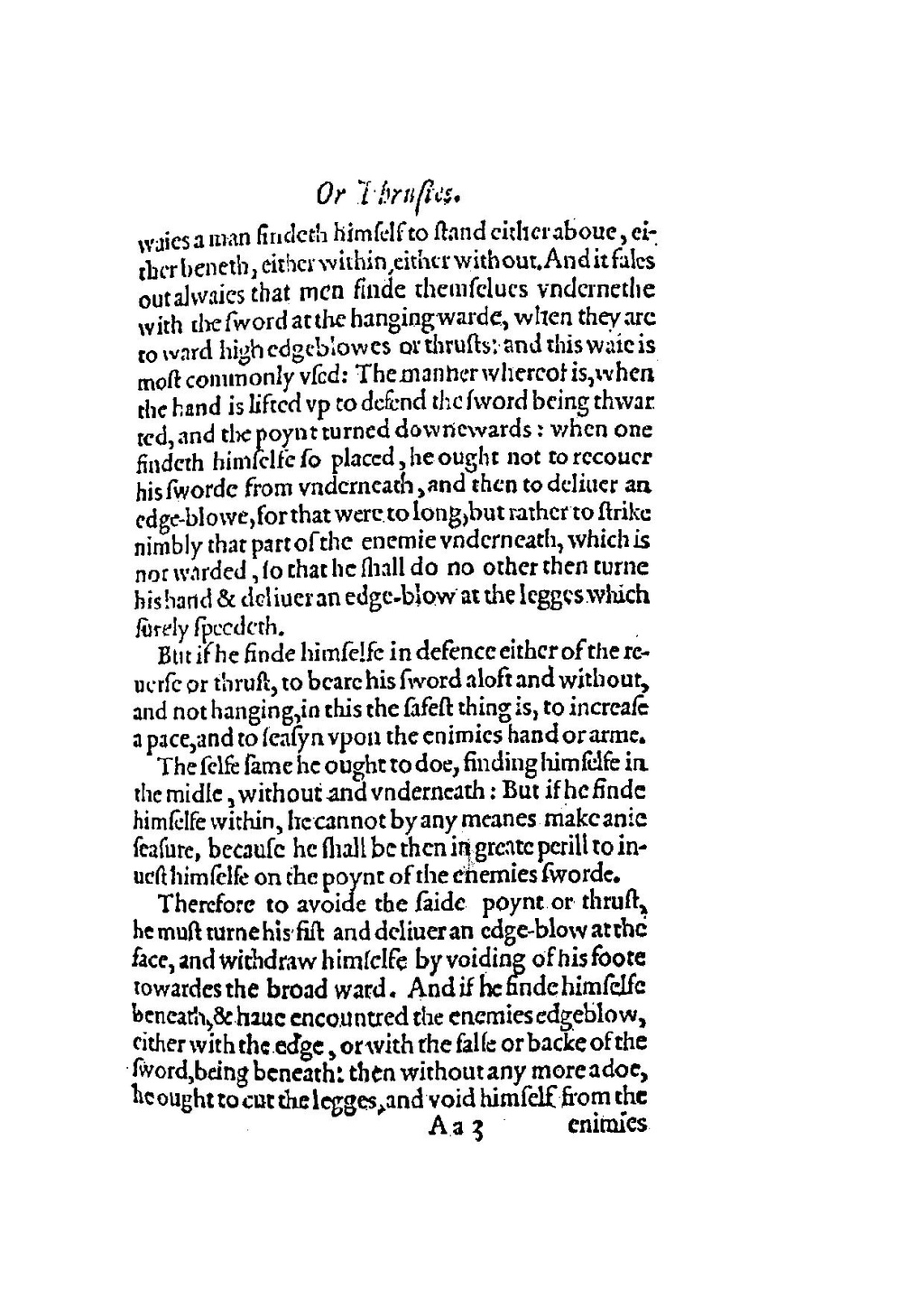waies a man findeth himself to stand either aboue, either beneth, either within, either without. And it fales out alwaies that men finde themselues vndernethe with the sword at the hanging warde, when they are to ward high edgeblowes or thrusts; and this waie is most commonly vsed: The manner whereof is, when the hand is lifted vp to defend the sword being thwar ted, and the poynt turned downewards: when one findeth himselfe so placed, he ought not to recouer his sworde from vnderneath, and then to deliuer an edge-blowe, for that were to long, but rather to strike nimbly that part of the enemie vnderneath, which is not warded, so that he shall do no other then turne his hand & deliuer an edge-blow at the legges which surely speedeth.
But if he finde himselfe in defence either of the reuerse or thrust, to beare his sword aloft and without, and not hanging, in this the safest thing is, to increase a pace, and to seasyn vpon the enimies hand or arme.
The selfe same he ought to doe, finding himselfe in the midle, without and vnderneath: But if he finde himselfe within, he cannot by any meanes make anie seasure, because he shall be then in greate perill to inuest himselfe on the poynt of the enemies sworde.
Therefore to avoide the saide poynt or thrust, he must turne his fist and deliuer an edge-blow at the face, and withdraw himselfe by voiding of his foote towardes the broad ward. And if he finde himselfe beneath, & haue encountred the enemies edgeblow, either with the edge, or with the false or backe of the sword, being beneath: then without any more adoe, he ought to cut the legges, and void himself from the

